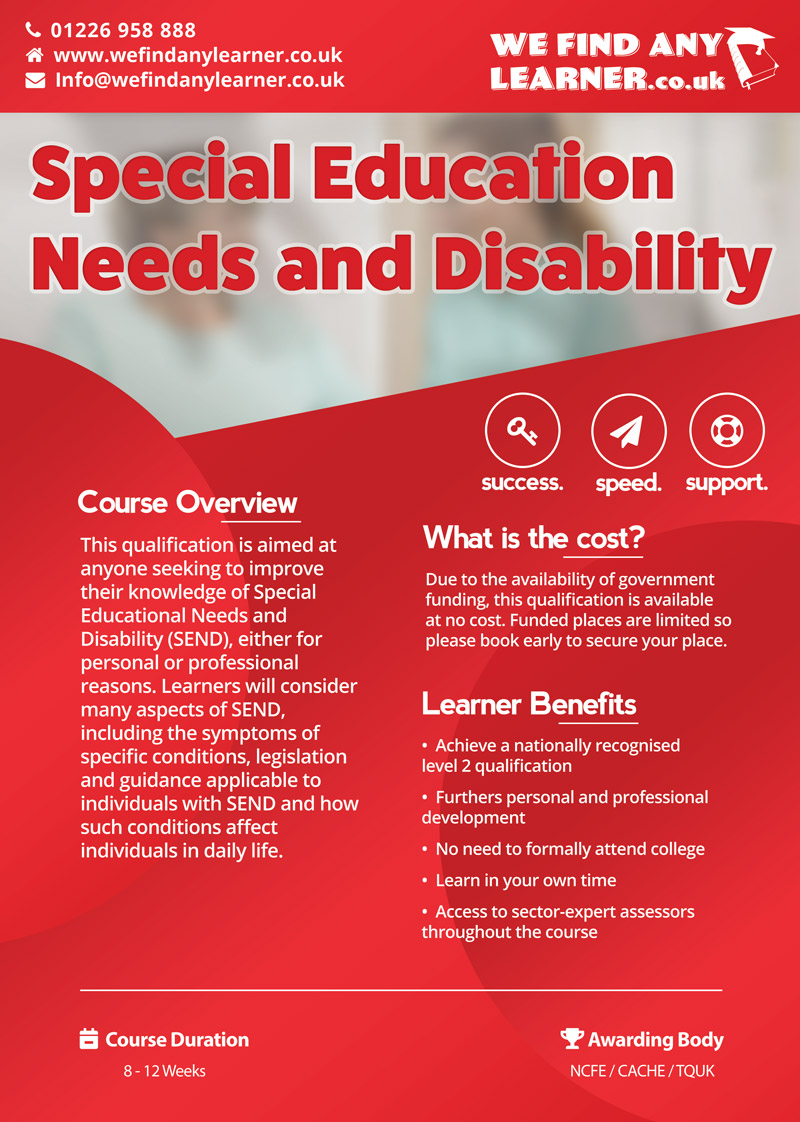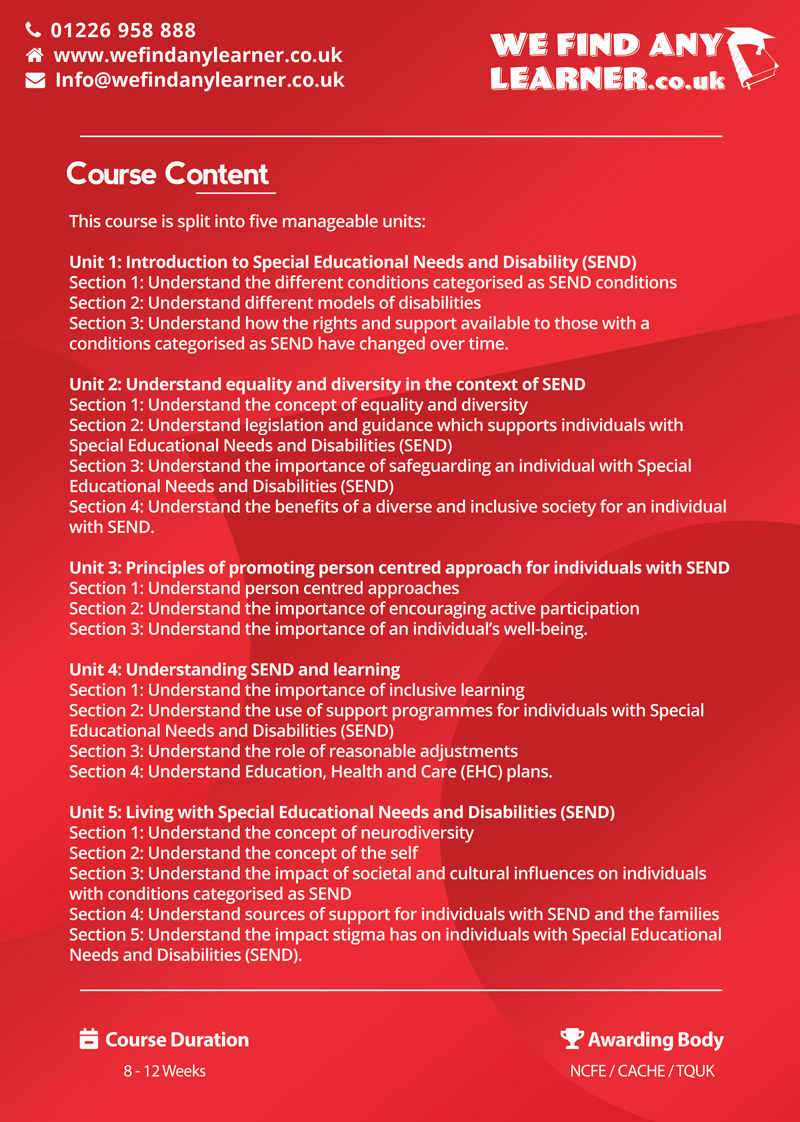Special Education Needs and Disability Level 2
This qualification is aimed at anyone seeking to improve their knowledge of Special Educational Needs and Disability (SEND), either for personal or professional reasons. Learners will consider many aspects of SEND, including the symptoms of specific conditions, legislation and guidance applicable to individuals with SEND and how such conditions affect individuals in daily life.
Course Fees
Free
Course Delivery
Digital or Paper-based
Course Duration
8 to 12 Weeks

Awarding Body
NCFE / CACHE / TQUK
Course Content
This course is split into five manageable units:
Unit 1: Introduction to Special Educational Needs and Disability (SEND)
- Section 1: Understand the different conditions categorised as SEND conditions
- Section 2: Understand different models of disabilities
- Section 3: Understand how the rights and support available to those with conditions categorised as SEND have changed over time.
Unit 1 summary:
In this unit, learners will explore a range of SEND conditions and the causes of these, as well as the social and medical models of disability. They will also learn about barriers that individuals with SEND might face and positive changes that have occurred over time in relation to SEND.
Unit 2: Understand equality and diversity in the context of SEND
- Section 1: Understand the concept of equality and diversity
- Section 2: Understand legislation and guidance which supports individuals with Special Educational Needs and Disabilities (SEND)
- Section 3: Understand the importance of safeguarding an individual with Special Educational Needs and Disabilities (SEND)
- Section 4: Understand the benefits of a diverse and inclusive society for an individual with SEND.
Unit 2 summary:
Learners will look at equality, diversity and inclusion within the workplace, community and wider society, as well as exploring relevant legislation and guidance in relation to SEND. They will also learn about safeguarding and the legislation surrounding this, and the different types of abuse.
Unit 3: Principles of promoting person centred approach for individuals with SEND
- Section 1: Understand person centred approaches
- Section 2: Understand the importance of encouraging active participation
- Section 3: Understand the importance of an individual’s well-being.
Unit 3 summary:
Learners will learn about the person-centred approach in relation to SEND, and the importance of active participation for individuals. They will also look at well-being and how this can be promoted.
Unit 4: Understanding SEND and learning
- Section 1: Understand the importance of inclusive learning
- Section 2: Understand the use of support programmes for individuals with Special Educational Needs and Disabilities (SEND)
- Section 3: Understand the role of reasonable adjustments
- Section 4: Understand Education, Health and Care (EHC) plans.
Unit 4 summary:
Learners will explore different learning styles and support programmes used in educational settings. They will also learn about reasonable adjustments and how Education, Health and Care (EHC) plans work.
Unit 5: Living with Special Educational Needs and Disabilities (SEND)
- Section 1: Understand the concept of neurodiversity
- Section 2: Understand the concept of the self
- Section 3: Understand the impact of societal and cultural influences on individuals with conditions categorised as SEND
- Section 4: Understand sources of support for individuals with SEND and the families
- Section 5: Understand the impact stigma has on individuals with Special Educational Needs and Disabilities (SEND).
Unit 5 summary:
Learners will learn about neurodiversity and self-identity, as well as how societal and cultural influences can impact on individuals with SEND. They will also look at the support available for individuals with SEND and their families, as well as the effects of stigma.


